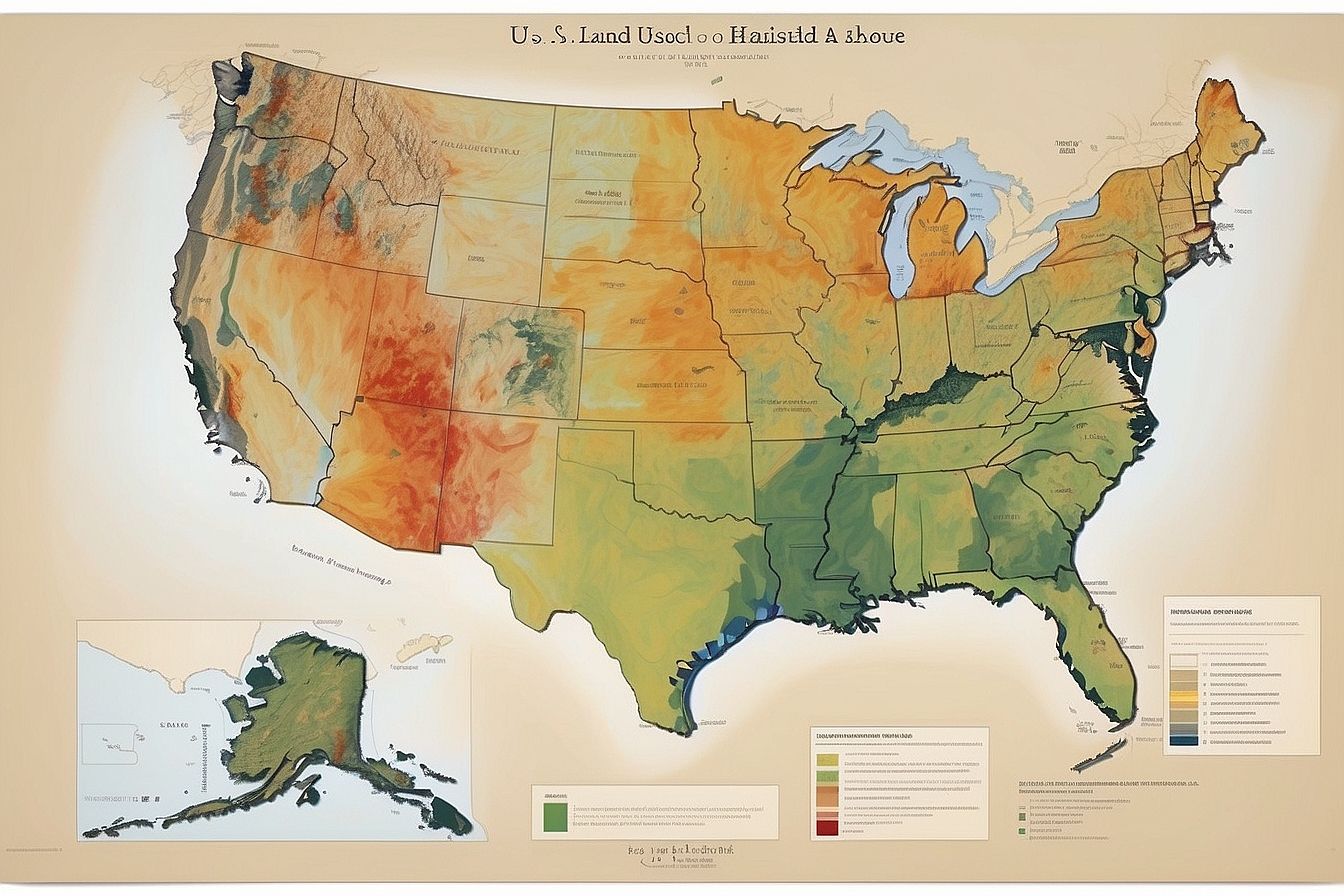Acid rain is a term used in virtually every environmental documentary and green outreach initiative, yet many of us are not sure what exactly acid rain has come to signify or its potentially severe implications in environmental balance. Quite simply, it is a matter of solubility, a basic physical phenomenon that is capable of sustaining as well as ending life when manifested under environmental conditions that are largely manmade. Welcome to the preventable and yet misunderstood world of acid rain.
What is Acid Rain

https://web.archive.org/web/20170501153951if_/http://www.youtube.com/embed/MqHw1hMEkAQIn definition, acid rain is “the deposition of a mixture of acidifying compounds to soils, surface waters and buildings from the atmosphere.1 Usually, this deposition occurs through atmospheric precipitation (rainfall), hence the phenomena has assumed the name acid rain. From a literal sense, the term describes exactly what happens. Rainfall is essentially being acidified through atmospheric pollutants that are mostly anthropogenic (manmade) in nature. This mechanism of acidification can be confusing to those who have not taken a number of chemistry classes, so we will quickly run through a crash course of environmental acid chemistry.
When you add sugar to coffee, or salt to water, you notice how easily the sugar and salt dissolves in their respective liquids. In fact, a large variety of solids tend to dissolve in liquids, especially water, which is often given the somewhat misleading title of “universal solvent.” The truth is, however, that water cannot dissolve a large variety of substances, namely oils or large hydrocarbons. Additionally, we are used to conceptualizing liquids and solids (such as salt) dissolving in water, but it is somewhat counter intuitive to think of gases (such as oxygen) dissolving in water. There is, of course, a good reason for this. Most gases can barely dissolve in water, not even nearly to the degree that some solids or liquids can dissolve in water unless they are pressurized to gargantuan levels. Although gases cannot dissolve well in water, it is still important that they do dissolve somewhat because gases are necessary to support aquatic life in lakes, rivers and oceans.
In the case of acid rain, we come back to the matter of gases dissolving in liquid. There will always be gases dissolving to some extent in cloud water or rainfall because the atmosphere is essentially full of gases. But it becomes worrisome when too much of the wrong gas is dissolved in the atmosphere as there is a deep, dark secret at the heart of this solubility. Unexpectedly, there are numerous gases that combine with water to produce acidic solutions in a series of complex reactions. Acidity is scientifically defined to be the abundance of protons (H+ ions) in solutions. So a very acidic solution will have many H+ ions floating in it.
As illustrated in the set of reactions above, sulfur dioxide is one of such gases that are capable of producing an acidic solution when dissolved in water. Sulfur dioxide is first released into the atmosphere from a power plant, for example, and is oxidized in the upper atmosphere with the help of ozone and hydrogen peroxide to form sulfur trioxide.3 This sulfur trioxide forms sulfuric acid when it combines with atmospheric water. The mechanism of this is beyond the scope of this article, but the crucial detail of this process if the formation of sulfuric acid. Sulfuric acid is a diprotic acid, so for every one molecule of sulfuric acid, 2 H+ ions are released into solution. This event is marked by the last two equations above. As mentioned earlier, the more H+ ions in solution the more acidic it becomes. Are you confused yet?
In a nutshell, sulfur dioxide released from industrial sources can dissolve in rainwater and cloud water to become fairly acidic. It’s a similar story for nitrogen dioxide, with the addition of a few atmospheric factors. Nitrogen dioxide dissolves in atmospheric perspiration to create another strong acid called nitric acid. These few scientific concepts are the crux of acid rain and probably what most people, like me, were initially confused about. It is worth mentioning the pH scale briefly as well in the light of the conceptual headway we have just made.
A pH scale essentially measures the acidity of a solution, and the lower the pH the more acidic the solution. The scale runs from 0 -14, 0 being the most acidic, and increments by powers of 10 being logarithmic in nature. So if I drop the pH from 4→2, I have increased acidity by 100 fold. It is often not realized how little of a pH change can change the property of acidic water. To give some perspective, rainwater is typically at a pH of about 5.6.4 A fog consisting of acidified water in 1982 on the West Coast of the United States was measured to have a pH of 1.8!5 That is almost a 1000 fold increase in acidity attributed to acid rain, and when we consider the environmental consequences of such changes for species that live in a very controlled pH range we begin to appreciate the severity of the hazards acid rain can pose.
Acidic Deposition Particles
Although a good deal of acid rain is dissolved gases in rainwater, there are intriguingly a few ways that acidic agents in the atmosphere can deposit on the earth’s surface, which we will refer to as deposition particles. Remember from our definition that acid rain is not limited to being rain, although in most cases it might be just that. What is even more worrisome about acid rain deposition is the ability of many acidic gases and dry deposition particles to travel far distances to regions that are not even the source of the pollutant. For example, Japan is heavily influenced by Korean and Chinese emissions, while Canada faces the same fate from the United States.7
There are two main types of deposition particles:
- Wet Deposition – This is described as the deposition of acid particles in rain, snow, fog and even clouds before falling to the ground. So wet deposition is acid rain from the literal sense, and involves some sort of solubility medium such as rainwater or snow. It should be noted that a great deal of the acidification process occurs during the cloud formation process in the upper and middle atmosphere where nitrogen oxides and sulfur oxides are given a more fitting environment for solubility.9
Cloud deposition10 is actually an interesting sub-category of wet deposition, in that the cloud itself comes close enough to highlands to deposit acidic water on land surfaces. Clouds actually accumulate a much higher concentration of acid particles, so although this type of deposition is rare, it tends to have quite severe consequences. - Dry Deposition – This form of deposition involves the direct deposition of acidic particles without a solubility medium such as water. Instead, acidic particulates and gases fall to the ground as dust or smoke and stick to numerous surfaces in wait of rainwater that will wash it out to create acidic runoff. Therefore, although the deposition of acid particles occurs in a dry form, the particles take effect when they dissolve in water to create acidic solutions. And don’t think this is a rare occurrence—about half of the acidity in the atmosphere falls back as dry deposition.11
Sources of Acid Rain
Since acid rain is derived by and large by two very ubiquitous industrial gas pollutants—nitrogen and sulfur oxides—virtually every manmade process is fueling the flames of the issue. There are, however, some culprit sources that are significantly more damaging than others.
- Power Stations – One of the biggest culprits of them all, these are the largest emitters of nitrogen dioxide and sulfur dioxide in the atmosphere.12 A lot of this sulfur actually comes from coal that already has a good amount of natural sulfur that is oxidized into sulfur dioxide during the combustion process. There are several legislative movements that restrict low sulfur coal exclusively for this very reason. Phasing out coal or using low sulfur coal would significantly reduce the instances of acid rain, but at great cost to an industry that is habituated into using much cheaper high sulfur coal. Additionally, low sulfur coal usually has less energy content and is located in regions that are not high energy consumers such as Wyoming, and thus would need to be transported across the county to various power plants.13 Nevertheless, new amendments added to the Clean Air Act of 1990 mandates the promotion of low sulfur coal as part of the Acid Rain Program. As a result, we can hope to expect low sulfur profiles from power plants as long as these amendments are regulated.14
In addition to sulfur dioxide, power plants are also large emitters of nitrogen dioxide and other nitrogen oxides.15 Although somewhat more complicated of a process, nitrogen oxides are produced in very hot and pressurized environments in power plants where conditions are conducive to oxidize atmospheric nitrogen to oxides released as waste products. - Mining and processing – Mining industries that process ores for the extraction of lead, silver, and zinc usually carry out numerous cycles of combustions to purify the ore and extract metallic products. Unfortunately, sulfur is a fairly abundant element in these ores and repeated combustion reactions result in the creation of a great deal of sulfur oxides that are released as waste products. Paper manufacturing, wood pulping, fertilizer manufacturing, and petroleum refining are other industrial processes that release a good deal of sulfur oxides into the environment.16
As a byproduct of high heat combustion, nitrogen oxides are also inevitably produced in these industries through numerous intermediate chemical reactions. Sometimes, nitrogen is incompletely oxidized and the oxide only forms in the atmosphere at cloud levels. As a rule of thumb, if combustion is involved, we are likely to expect the release of nitrogen oxides. The exception to this rule is in the production of fertilizers, which involves the creation of various nitrate fertilizers17 (ammonium nitrate) by combusting nitrogenous starting material (nitric acid) that is not limited to atmospheric gas. In these cases, there is quite a bit more nitrogen oxide produced than in traditional combustion. - Transport – Motor vehicles are actually a substantial source of both nitrogen and sulfur oxides. Although a standard combustion engine does not produce a great degree of these gases, especially from modern day emissions regulation, the combined effects of millions of automobiles adds substantially.18 This being said, not all emissions regulations have the same regulation criteria and there is increased risk for nitrogen dioxide emissions especially in many developing nations. The release of nitrogen oxides is especially profound in automobiles, owed mostly to high heat combustion reactions in standard gasoline engines along with fuel controls to reduce sulfur levels in gasoline.
- Natural Processes – Although miniscule when compared to manmade emissions, there are several natural environmental processes that can contribute to sulfur and nitrogen oxide prevalence in the atmosphere. Hot springs,19 volcanoes, and organic decay can contribute a good deal to sulfur oxide levels, although volcanoes are guaranteed to “erupt” less than a turbine generator in a power plant.
Surprisingly, in the case of nitrogen dioxide, lightening is the culprit in creating the natural prevalence of this compound. When nitrogen gas is blasted with lightening, the strike involves so much energy that diatomic nitrogen (N2) actually splits and can combine with atmospheric oxygen to produce nitrogen dioxide. Of course, this entire process would need lightening and is therefore not an everyday natural process.
Effects of Acid Rain
By now, you could probably imagine several problems with increasing acidity in our physical environment by 100 fold and more. Let’s look at some of the major issues acid rain creates.
- Ecological Effects– Deposition of acidic particles via wet deposition or runoff from dry deposition creates an ecological nightmare for most aquatic life as well as terrestrial organisms such as birds.20
- Aquatic Environment: Most wild organisms are only able to sustain very specific acidity levels. This is especially true for various aquatic species that breathe and feed through direct water intake. Acidic water that travels through an organism’s circulatory system would acidify biological cells to a degree that all normal processing would eventually be inhibited. The effect is still profound with fish that have closed circulation, since blood buffering is not tolerant enough for the excessive levels of acid in the blood stream. Another side effect of increasing acidity in lakes, rivers and streams is the dramatic increase in aluminum absorption for aquatic organisms to often toxic levels. As a result, lower organisms that are broadly affected by acid rain would inevitably affect larger predatory aquatic species and even terrestrial species in the food chain.
- Forests: If not just for individual species, acid rain can have a very broad macroscopic effect on our environment in the way that it destroys forests by acidifying soils that are exposed to acid rain runoff. Like aquatic organisms, most plant life can only sustain a limited acidic environment. Usually, soils are natural buffers to deal with excessive acid levels. Acid rain, however, adds far too much acid into soils to cope with. As a result, acid rain damages forests and subsequently displaces many different animal species from their natural habitats. In addition, acid rain leaves trees and plants more vulnerable to disease and cold temperature. From an evolutionary standpoint, it means that resistant species could be subject to unnatural natural selection pressures. This issue is so profound that it is estimated that 30% of Swiss forests21 have been affected by acid rain damage. Loss of biodiversity is a major environmental issue with many causes, and certainly acid rain is on this list.
- Aquatic Environment: Most wild organisms are only able to sustain very specific acidity levels. This is especially true for various aquatic species that breathe and feed through direct water intake. Acidic water that travels through an organism’s circulatory system would acidify biological cells to a degree that all normal processing would eventually be inhibited. The effect is still profound with fish that have closed circulation, since blood buffering is not tolerant enough for the excessive levels of acid in the blood stream. Another side effect of increasing acidity in lakes, rivers and streams is the dramatic increase in aluminum absorption for aquatic organisms to often toxic levels. As a result, lower organisms that are broadly affected by acid rain would inevitably affect larger predatory aquatic species and even terrestrial species in the food chain.
- Structural Damage – If it is not the delicate environmental damage that interests you, perhaps the structural integrity of buildings and architecture would. Indeed, acid rain reacts to a great degree with calcium carbonate in limestone and degrades this building material over time. As a result, many older architectural sites are in danger of literally dissolving over time. What’s worrisome is the ability of acid rain to corrode even steel structures over time.22 As a result, even modern buildings, automobiles, airplanes, bridges and rail road tracks are victim to the deleterious effects of acid rain on our environment.
What You Can Do
The Acid Rain Program under the Clean Air Act of 1990 has been successful in reducing acid rain, however it has not eliminated this major pollution issue. The good news is that there are things we can all do to help curtail acid rain—conserve energy! Turn off appliances, lights, and computers when you don’t need to use them. Home energy usage is a major area where individuals can really make a difference for our shared environment. Do you really need to pump the AC in the summer or the heat in the winter? Are you only running your dishwasher or washing machine when you have full loads? What about using a clothesline to dry your clothes? Do you have Energy Star® appliances? Try to use energy sparingly! Then when having to go out and about think about taking public transportation instead of driving your own car, maybe even using a bike or walking whenever possible instead of driving ☺





